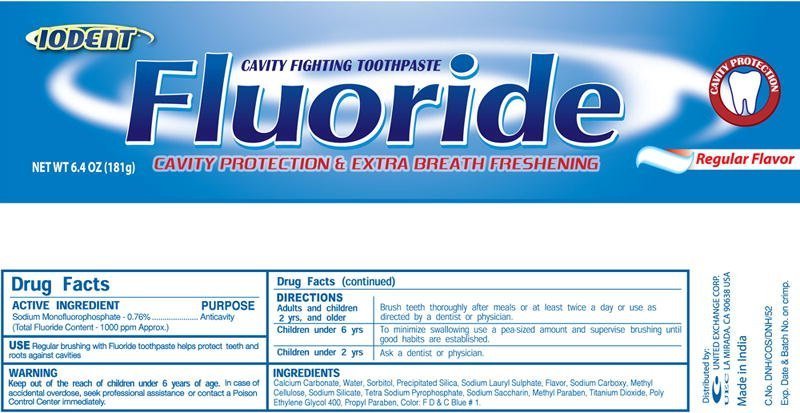What is good oral hygiene?
As a practicing dentist, i always ask my patient: Do you brush your teeth? And the answer i used to hear is a big YES! But did you really brush your teeth well? Do you really know what is good oral hygiene?
Good oral hygiene results in a mouth that looks and smells healthy. This means: (a) Your teeth are clean and free of debris. (b) Gum are pink and do not hurt or bleed when you brush or floss (c)Bad breath is not a constant problem.
If your gums do hurt or bleed while brushing or flossing, or you are experiencing persistent bad breath, see your dentist.
Your dentist can help you learn good oral hygiene techniques and can help point out areas of your mouth that may require extra attention during brushing and flossing.

How is good oral hygiene practiced?
Maintaining good oral hygiene is one of the most important things you can do for your teeth and gums. Healthy teeth not only enable you to look and feel good, they make it possible to eat and speak properly. Good oral health is important to your overall well-being.
Daily preventive care, including proper brushing and flossing, will help stop problems before they develop and is much less painful, expensive, and worrisome than treating conditions that have been allowed to progress.
In between regular visits to the dentist, there are simple steps that each of us can take to greatly decrease the risk of developing tooth decay, gum disease and other dental problems. These include:
- Brushing thoroughly twice a day and flossing daily
- Eating a balanced diet and limiting snacks between meals
- Using dental products that contain fluoride, including toothpaste
- Rinsing with a fluoride mouthrinse if your dentist tells you to
- Making sure that your children under 12 drink fluoridated water or take a fluoride supplement if they live in a non-fluoridated area.
What is the right way to brush?
How long you spend to clean your teeth each time? Proper brush takes at least two minutes — that’s right, 120 seconds! Most adults do not come close to brushing that long. To get a feel for the time involved, try using a stopwatch. To properly brush your teeth, use short, gentle strokes, paying extra attention to the gumline, hard-to-reach back teeth and areas around fillings or other restoration. Concentrate on thoroughly clean each section as follows:
- Clean the outer surfaces of your upper teeth, then your lower teeth
- Clean the inner surfaces of your upper teeth, then your lower teeth
- Clean the chewing surfaces
- For fresher breath, be sure to brush your tongue, too
 |
| Gently brush the outside, inside and chewing surface of each tooth using short back-and-forth strokes. |
 |
Tilt the brush at a 45° angle against
the gumlineand sweep or roll.
The brush away from the gumline.
Remember: Brushes horizontally
easily traumatized gum and
caused teeth wear off |
 |
| Gently brush your tongue to remove bacteria and freshen breath. |
What type of tooth brush should i used?
Most dental professionals agree that a soft-bristled brush is best for removing plaque and debris from your teeth without traumatizing your gums and teeth. Small-headed brushes are also preferable, since they can better reach all areas of the mouth, including hard-to-reach back teeth. For many, a powered toothbrush is a good alternative. It can do a better job of cleaning teeth, particularly for those who have difficulty brushing or who have limited manual dexterity.
More about toothbrush: 5 Things You must know about TOOTHBRUSH
How important is the toothpaste i used?
It is important that you use a toothpaste that’s right for you. Today there is a wide variety of toothpaste designed for different conditions. Studies showed no significant different in the effectiveness of caries prevention among different products. The most important you need to make sure while purchasing your toothpaste is the toothpaste must be fluoridated. Ask your dentist which toothpaste is right for you.
More about toothpaste: 8 things you need to know about your toothpaste.
---------------------------------------------------------------------------------------------------------------------------------------------------------------------------------------------------------------------------------------------------------------------------------------------------------------------------
口腔保健知多少?
您知道良好的口腔保健吗?身为一名职业牙医,我常常问我的病人:您刷牙了吗?而我常得到的答案是:有!但是您真的有刷干净吗?您真的知道何谓良好的口腔保健吗?
牙牙学医就在这与大家分享何谓良好口腔保健。
良好的口腔保健能使我们口腔看到与闻到健康。所以,(1)您的牙齿应该干净没有牙垢 (2)健康的牙龈应该是粉红色而不是红肿及刷牙后流血 (3)没有口臭的困扰
如果您在刷牙时或之后有流血,及有难掩口臭问题, 那么您应该及时寻医。您的牙医会为您治疗并给于口腔保健知识。
以下为适用于大部分群众的口腔保健方式。 *注:一些个案需要有一些更改以便达到更有效的保健方式。所以赶紧询问您的牙医并找到适宜你个人的口腔保健方式。

左图为健康牙龈:呈粉红色,刷牙时不会流血 右图为不健康牙龈:呈红肿,牙龈萎缩, 牙齿布满牙垢,并且有口臭问题
怎样才能保持健康口腔呢?
保持口腔健康是照顾您的牙齿及牙龈最重要的事。口腔的健康不只是让您更好看及舒服,您更加能舒舒服服的吃东西及于别人交谈。日常生活中,健康的口腔食无可或缺的。
日常中的刷牙及使用牙线(flossing)能够保持口腔健康并且阻止牙齿方面的问题发生,所以这是最不痛,便宜,及容易办到。而不自于等到问题日渐恶化。俗语说得好:防范胜于治疗。
保持牙齿定期检查及个人口腔保健能够有效阻止牙齿疾病的发生,如蛀牙 (caries),牙龈炎(gingivitis), 及其他牙齿疾病。
个人口腔保健方式如下:
- 每天刷牙两次,并使用牙线
- 饮食均衡,减少主餐间的零食
- 使用含有氟 (fluoride) 的牙膏
- 使用含有氟 (fluoride) 的漱口剂(依照您的牙医指示)
- 确保您的孩子饮用的开水含有适量的氟 (fluoride)。 如果您所在的地方没有含氟 (fluoride)的自来水,您可以询问您的牙医给与适当的氟补充 (fluoride supplement)
怎样才是正确的刷牙方法呢?
您平常刷牙都用多久呢?正确的刷牙需要至少2分钟-是的,是120秒哦!大多数的人都常刷牙那么久,只是随随便便的敷衍几下便可。 那是不对的,所以您可以试用倒数秒表计算。要刷的正确,您需要用轻柔的刷,并注重于刷牙龈及牙齿之边沿, 难以刷到的后齿及补牙的边沿。然后跟着以下步把每个部分骤彻底刷干净:
- 首先先刷牙外表面,先刷上面牙然后刷下面牙
- 接着刷牙齿内面, 先刷上面牙然后刷下面牙
- 接着刷牙齿的咀嚼面
- 最后,记得刷刷您的舌头以保持口腔清新
 |
将牙刷倾斜45度,让牙刷刷
毛轻轻的靠在牙龈边沿, 然
后以抹檫或打圈圈的方式
向牙龈外刷。
*备注:勿将牙刷打横刷,
因为这会造成牙齿及牙龈
受损,并产生牙齿敏感的
症状。
|
以轻轻刷的方式把牙齿的每一个
表面彻底刷干净
 |
| 最后将您的舌头刷干净, 因为舌头上藏有很多细菌. 那么您将有清新的口腔 |
牙刷应该怎么选?
使用软毛牙刷以清除牙齿上的牙垢及细菌而不伤害您的牙齿及牙龈,这是一项牙医均赞成的一种做法。如能用小一点的牙刷那更好,因为小牙刷能够刷得到达牙刷所难到的地方。电动牙刷也可以是另一项选择,电动或手动牙刷同样能有一样的效率。电动牙刷能够帮助一些行动不大方便,手不灵巧的人以达至健康的口腔水平。
使用软毛牙刷以清除牙齿上的牙垢及细菌而不伤害您的牙齿及牙龈,这是一项牙医均赞成的一种做法。如能用小一点的牙刷那更好,因为小牙刷能够刷得到达牙刷所难到的地方。电动牙刷也可以是另一项选择,电动或手动牙刷同样能有一样的效率。电动牙刷能够帮助一些行动不大方便,手不灵巧的人以达至健康的口腔水平。
更多有关牙刷的知识:5个你必须知道有关牙刷的知识
牙膏应该怎么选?
选对牙膏也是非常重要的。今天市场上有着不同的牙膏以用于不同的牙齿症状。 但是研究显示,它们防止蛀牙的功效是没有显著的差别。所以它们都能适用于防止蛀牙,只要它们都含有氟 (fluoride) 。可是如果您需要更多的防护,比如牙齿敏感, 那么一些有减轻牙齿敏感的牙膏会比较适合。您也可以询求您的牙医建议。

最后记得每三个月或是牙刷已磨损, 更换您的牙刷
切记:口腔健康,全身健康!

